Energy efficiency explained simply
Increasing energy costs and climate change
The ratio of the energy input required for a certain use is the measure of energy efficiency of a product. The less energy required, the more energy efficient the process or product. But the question is why we need more energy efficiency in the first place. Energy prices are rising, and the increasing consumption of fossil energies is having a negative impact on climate change. Increasing energy efficiency leads to a reduction in energy consumption.
Nowadays, however, the focus is not only on energy efficiency, but also on the general reduction of the energy demand. This is because the use of energy produces pollutants as a secondary product, which pollute the environment. In 2008, the German government set itself the goal of reducing electricity consumption by 25% by 2050 compared to 2008 levels. Other goals are to reduce primary energy consumption by 50% and to achieve an almost climate-neutral building stock by 2050.
For our part, we at LAMILUX contribute to generating some impact on climate protection by offering energy-efficient products in our portfolio. These products help to reduce the heat loss of a building.
This saves resources and costs. A passive house window, such as our LAMILUX Glass Skylight passive house standard, saves more than 70% heat loss compared to insulation glazing in an old building. Another energy-saving measure is, for example, good retrofit insulation of the exterior wall, as this saves almost 90% heat loss in comparison to poor insulation that is years out of date. If a heat recovery system is used, 75-90% of the ventilation heat loss can be saved, as the fresh air is heated with the heat of the extracted air.
There are various standards and guidelines for energy efficiency. The Energy Conservation Act EnEG was created in 1976 to minimise dependence on imported energy sources. It can also serve the basis for various regulations, such as the Energy Saving Ordinance EnEV, which was, however, replaced by the Building Energy Act GEG on 1 November 2020. This regulation specifies how high the annual primary energy demand of a building and the quality of the external skin of the building should be. Basically, a distinction is made here between residential and non-residential buildings.
Why is energy efficiency important?
In the energy market, both prices and demand are rising continuously.
The more fossil fuels are burned, the faster climate change progresses, causing concern in the producing countries. Increasing energy efficiency slows down the rise in energy prices and at the same time supports independence from energy imports. This results in fewer energy distribution conflicts and less environmentally harmful carbon dioxide is emitted.
KfW financing assistance
The loan from the Federal Promotion for Efficient Buildings (BEG), is the perfect solution for the construction, purchase, or renovation of an energy-efficient building. The more energy-efficient the building is at the end of the measure, the more funding is paid out. There is a maximum limit of € 120,000 per housing unit, though.
Energy efficiency in industry
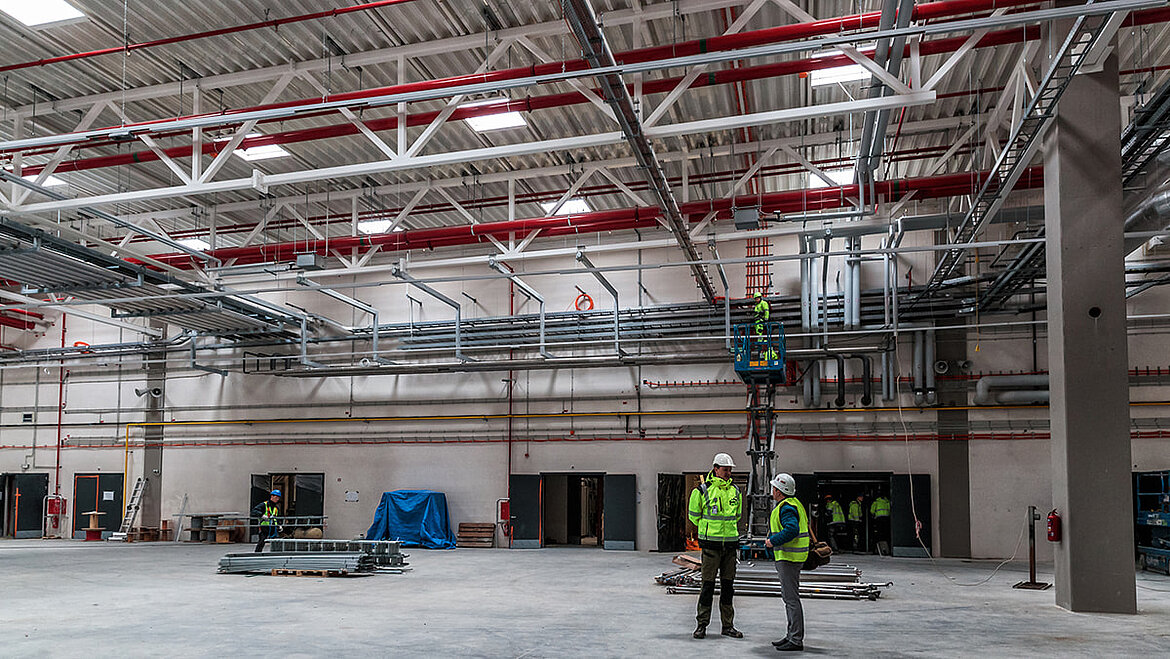
Energy efficiency in industrial buildings can be enhanced through various strategies. By further developing technologies, ways can be found to generate a lower energy demand. However, not only the technologies should be further developed, but also measuring, regulation and control techniques should be renewed. That way, more energy-efficient systems are used, and the energy demand is reduced. Another aspect is the optimisation of the value chain. Processes should be coordinated in a resource-saving way without hindering operations. Electricity for plants, for example, can be obtained from renewable energy sources. In addition, there are systems to avoid wasting residual heat that is generated during various processes. These store this heat and return it to the building.
Energy efficiency at home
To save energy in the residential building, there are some things that should be considered. A few practical examples: Electronic appliances are divided into efficiency classes, which help to select the most resource-saving appliance. Various appliances have an eco-program that can also be switched on. In a dryer, for example, the lint filter must be kept clean at all times. With a washing machine, it is important to load it correctly - neither too much nor too little. With a refrigerator, too, the load is crucial to save as much energy as possible because a refrigerator should be full without being overloaded. Otherwise, the interior will warm up too quickly if it has too much free space. What heats up faster also has to be cooled down more and consumes more energy.
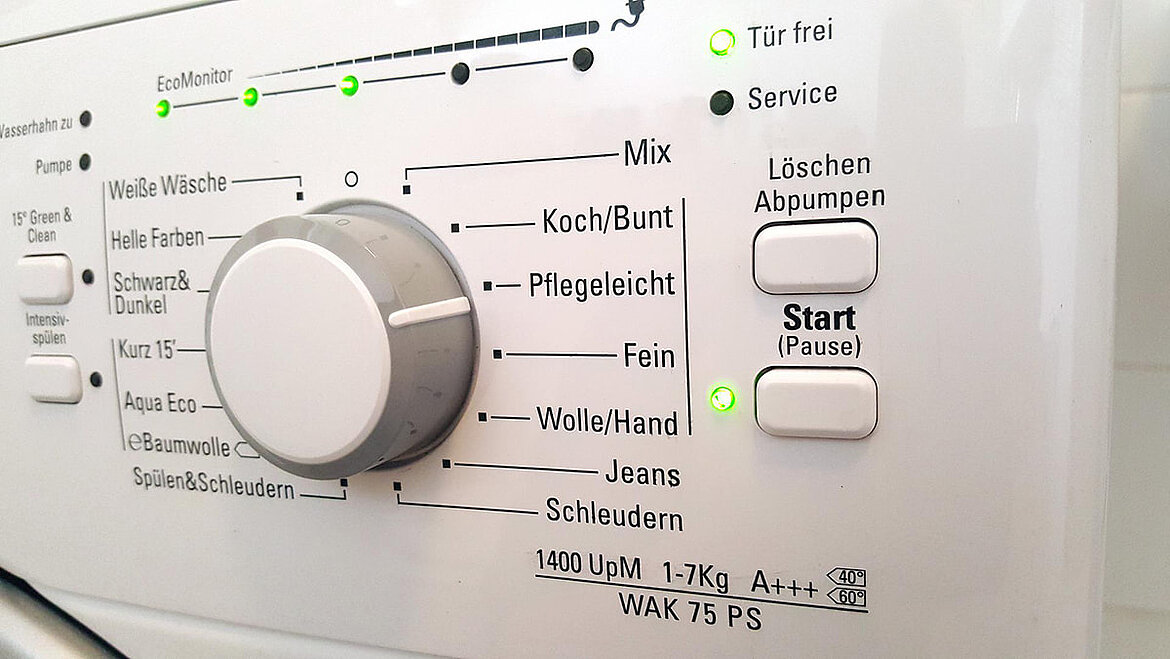
With ventilation systems, you get continuous fresh air inside the building without the large heat loss of the window opening. If the ventilation system has a device for heat exchange, you also benefit from the fact that no heat is lost. To heat energy efficiently, optimised or modern heating systems are a must, which are also subsidised by the government. In addition, good insulation is essential to minimise heat loss of the building and to build a façade that is free from or low in thermal bridges. Those who want to produce their own electricity through renewable solar energy have the option of using photovoltaic systems on the roof.
Energy-efficient renovation
Opportunities and reasons for energy-efficient renovation
There are several reasons to renovate a building in an energy-efficient way. One major aspect is the reduction of heating costs, as energy-efficient renovation reduces thermal bridges. Less heat escapes, which in turn means that less heating is needed. The need for oil or gas decreases. Fluctuations in energy prices are no longer too relevant. Renovation also increases living comfort because in winter, the living spaces are comfortably warm and in summer, the heat stays outside. Nowadays, great importance is also attached to living comfort. For this reason, potential tenants and buyers are more willing to pay more money. This means that the value of the property increases significantly. In addition, an energetic renovation does something good for the environment, as environmentally harmful CO2 emissions are reduced. But the question now arises as to what can be done to carry out energy-saving renovation. Most weak points where heat escapes from the building, are the roof, the façade, the windows and the doors. These should be replaced or upgraded with better, more energy-efficient products. In addition, modernising the heating system brings major benefits. Especially if it is powered by renewable energies.
Sustainability is becoming increasingly important
Environmentally friendly materials and processes
Anyone who wants to build sustainably should pay close attention to every step of the building and planning process and pay attention to certain factors that speak in favour of sustainability. For example, the choice of building materials or the planning of heating, ventilation and sanitation systems are important. These should be selected in an environmentally friendly way. It is also important that the planned or constructed building fits in well with the natural landscape. Today's modern and sustainable methods have their roots in traditional techniques, as sustainable building methods date back more than 50 years. Due to the advancing climate change, it has become more important than ever in recent years to raise awareness of sustainability and the use of environmentally friendly methods.
To identify suitable methods and products for sustainable architecture, there are several indications:
- Reducing negative effects on the environment
- Minimise harmful energy consumption
- Water saving systems
- Renewable materials
- Recycled materials
- Smaller houses such as Tiny Houses
- Involving the environment
The Environmental Product Declaration is also helpful in the selection process. This is a document that shows the environmental characteristics of various products. All product life cycles from production to delivery are considered. This is a good basis for architects, planners or other experts to plan buildings with suitable sustainable products.
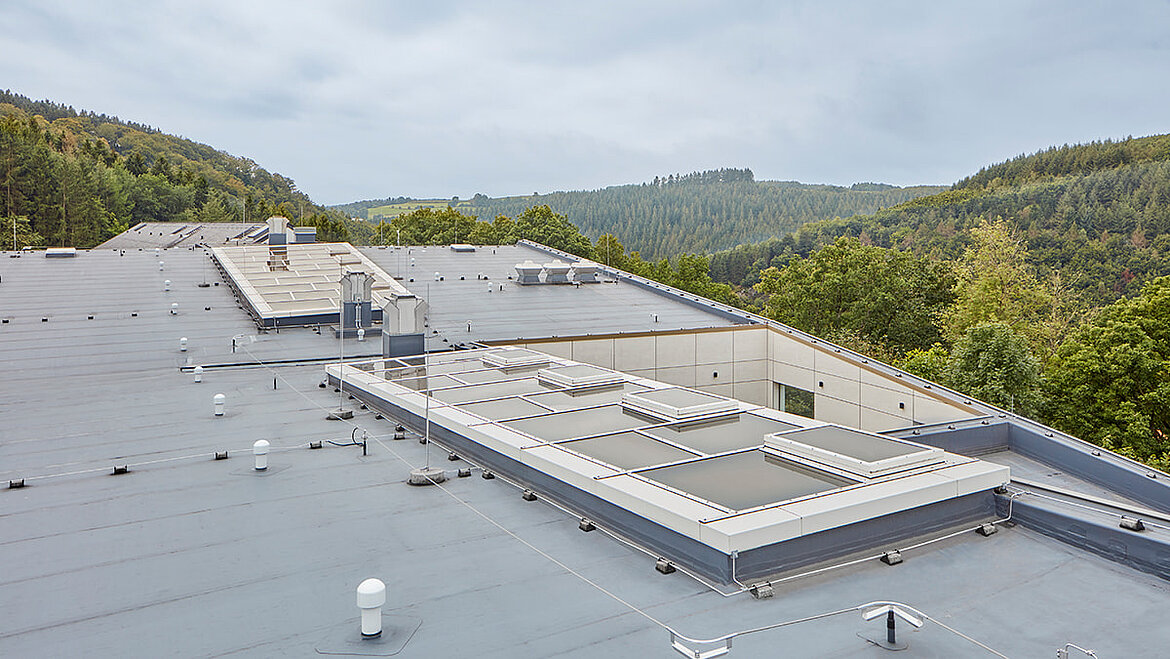
Our product - LAMILUX Glass Roof Passivhaus
- First certified inclined glazing according to passive house standards
- Very low heat loss of maximum 0.81W/(m²K)
- Particularly energy-efficient due to the highest efficiency class
- Proof of sustainability in the environmental product declaration
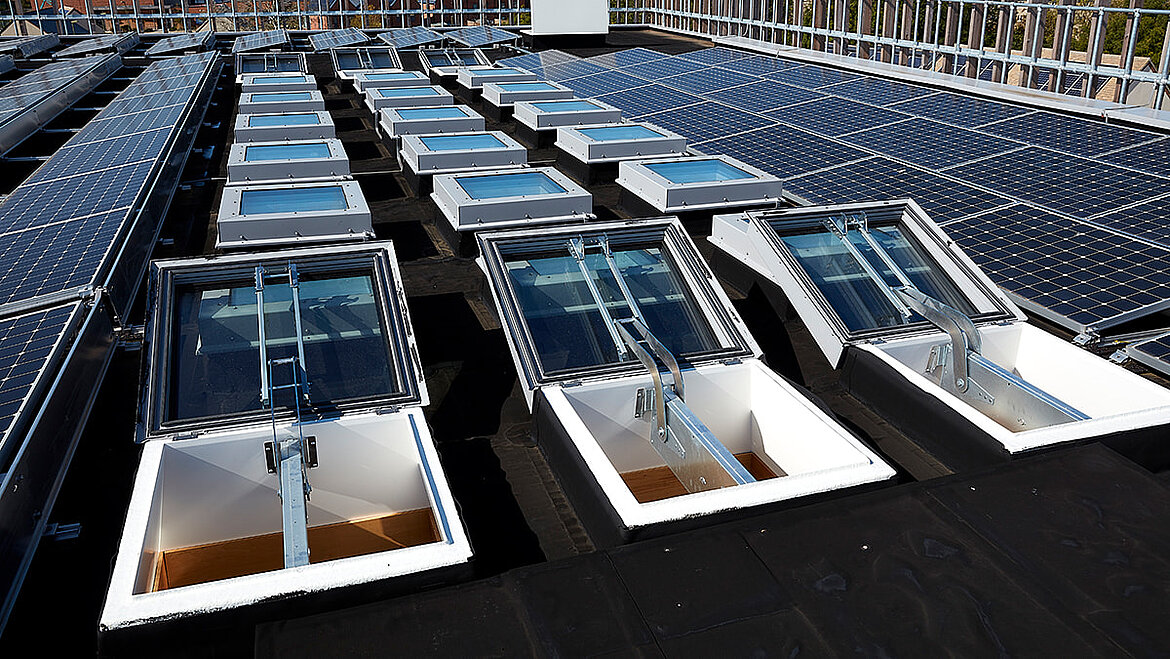
Our product - Glass Skylight FE Passivhaus
- First skylight certified to Passivhaus standard
- Particularly energy-efficient due to the highest efficiency class
- Very low heat loss of maximum 0.84W/(m²K)
- Proof of sustainability in the environmental product declaration
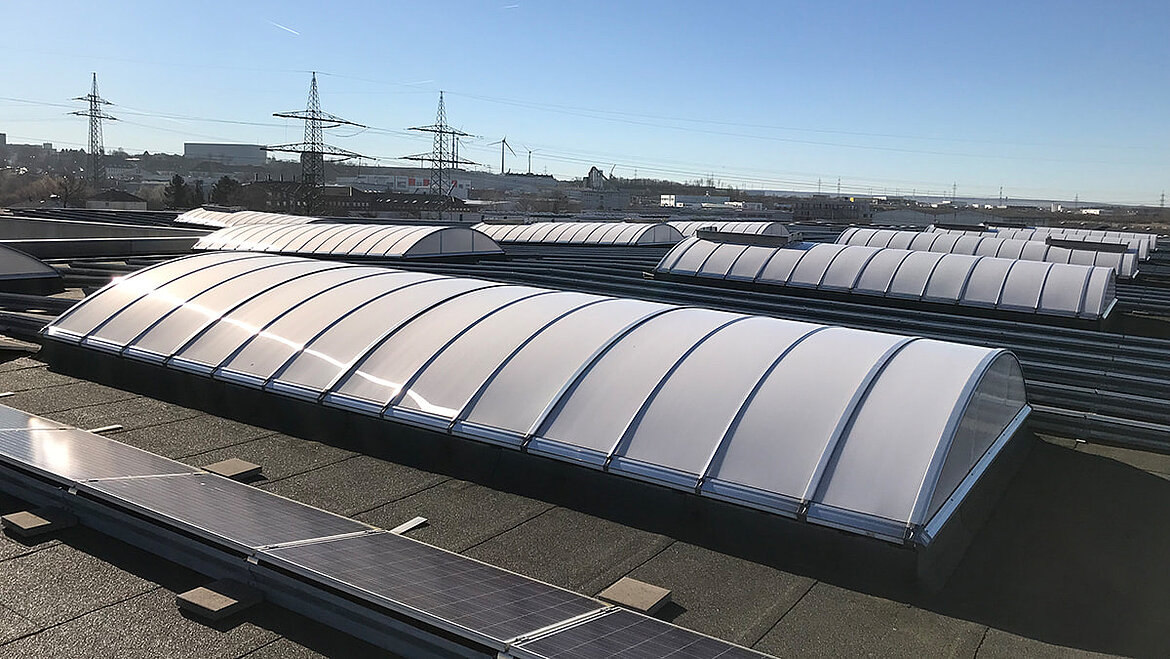
Our product - Continuous Rooflight B Passivhaus
- First continuous rooflight system certified to passive house standard
- Passive house efficiency class
- Very low heat loss of maximum 0.95 W/(m²K)
- Proof of sustainability in the environmental product declaration
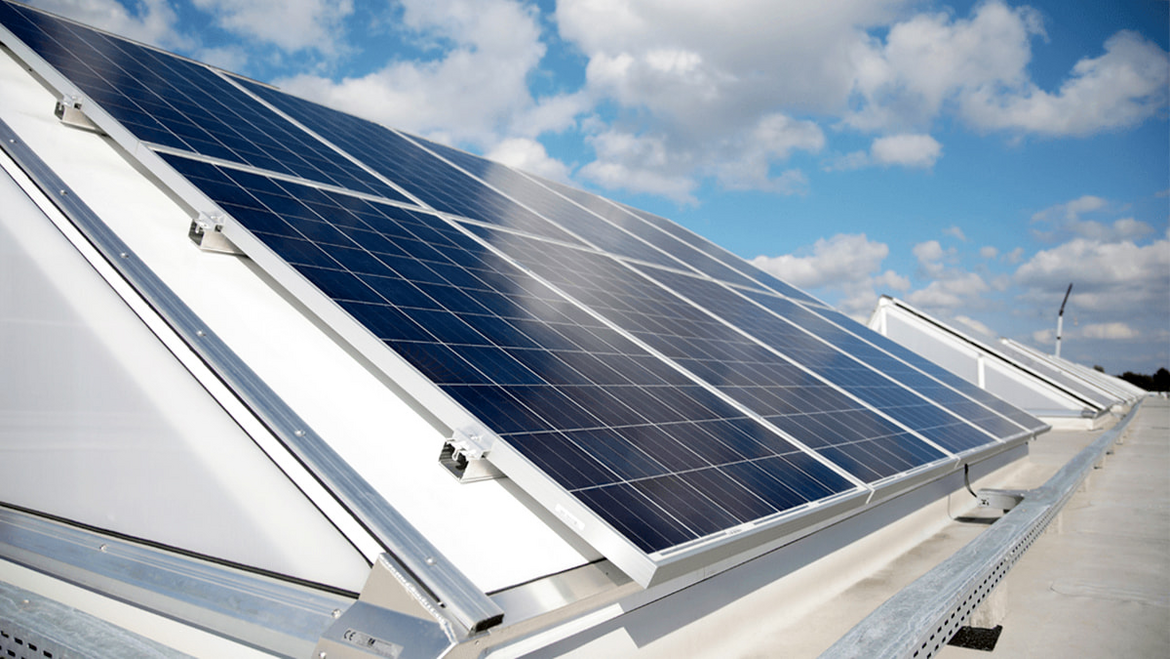
Our product – LAMILUX Continuous Rooflight S Energyline
- Linking photovoltaic systems and skylights
- Particularly energy-efficient due to highest efficiency class
- Very low heat loss of maximum 1.2 W/(m²K)
- Proof of sustainability in the environmental product declaration
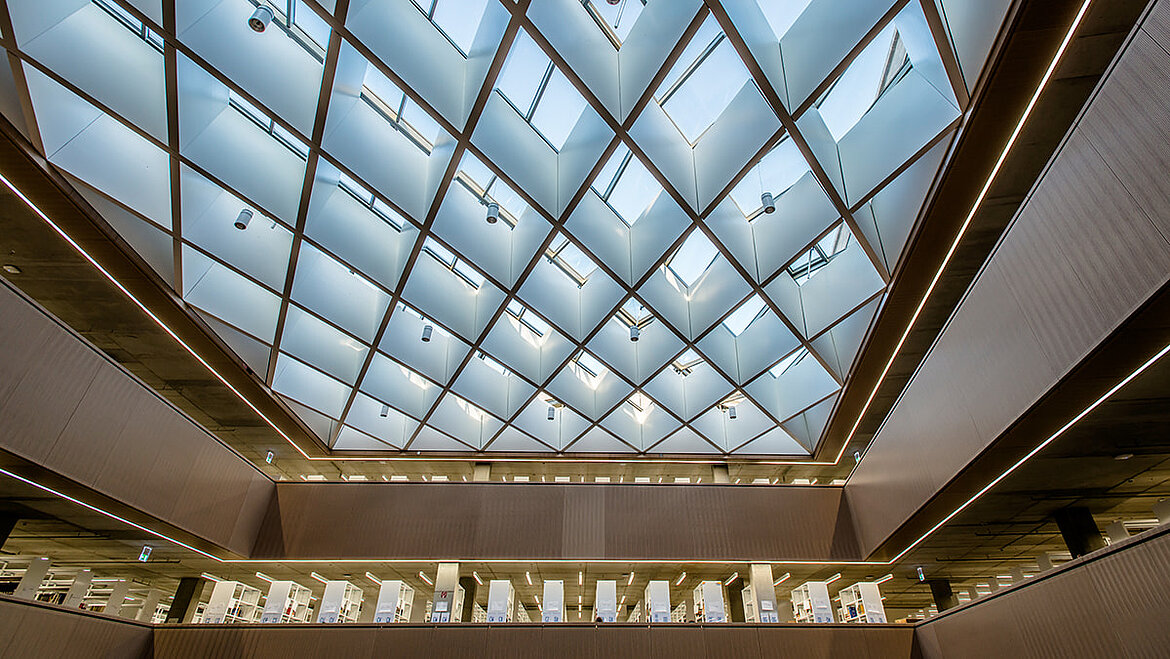
Our knowledge - sustainable building with glass roofs
Passive house certified elements are often used in educational buildings to maximise energy efficiency in such large buildings. Daylight makes it easier for students to concentrate, as natural light reduces fatigue. But there are not only positive effects on the people in the building, costs and the need for artificial light are also reduced at the same time.
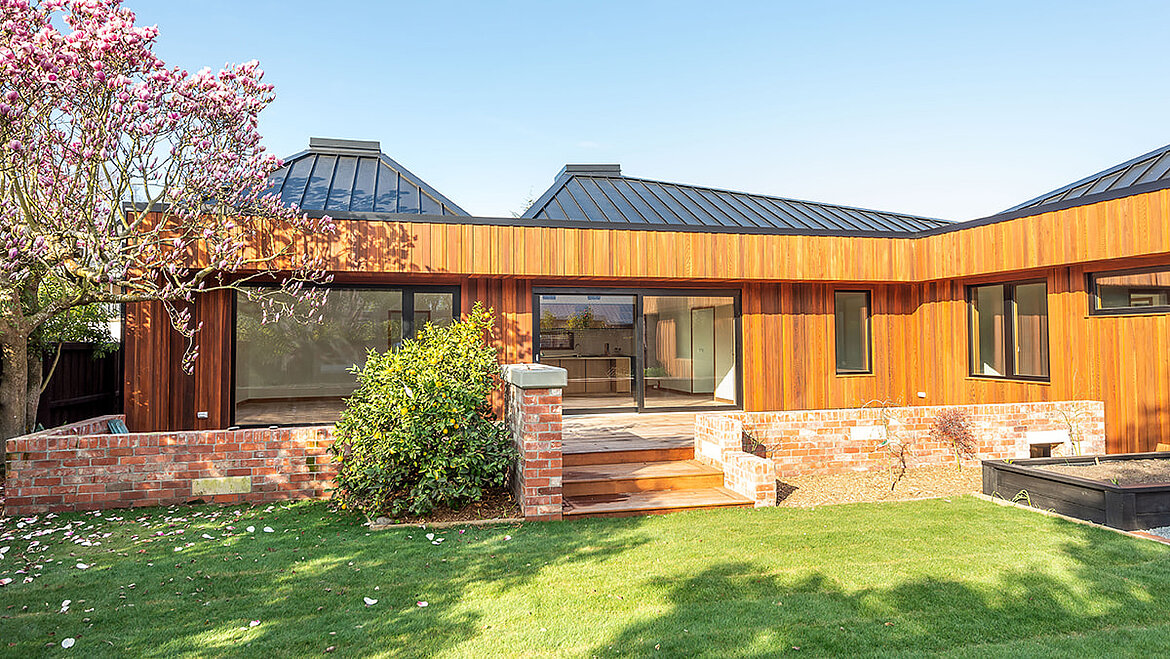
Our knowledge - this is how thermal insulation works
There are different ways to leave the heat outside in summer while letting in inside in winter. One possibility is the LAMILUX Continuous Rooflight S in northern light - shed construction. With this continuous rooflight, only the side facing north is glazed. The side facing south is opaque. That way there is less glare since less direct sunlight penetrates into the building.